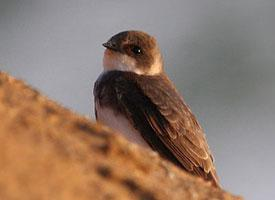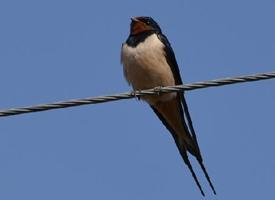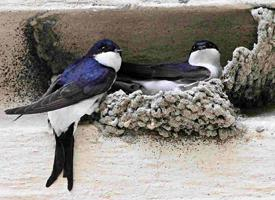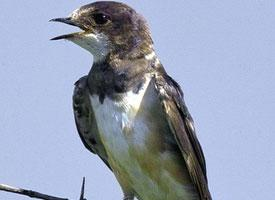
Váhy a míry
| Délka | 12 cm |
|---|
Popis zvířete
The Sand Martin (Riparia riparia), also known as the Bank Swallow in North America, is a small, agile bird belonging to the swallow family, Hirundinidae. This diminutive bird is remarkable for its cosmopolitan distribution, being found across Europe, Asia, Africa, and the Americas. Its presence is a herald of spring in many regions, returning from its wintering grounds in Africa and South America to breed in temperate zones.Physically, the Sand Martin is a study in modest elegance. Adults typically measure between 12 to 13 cm in length, with a wingspan of 20 to 22 cm, and weigh around 10 to 20 grams. Their plumage is characterized by a contrast between the upper and lower parts of their body. The upperparts are brown, providing excellent camouflage against the sandy environments they frequent, while the underparts are white, with a distinctive brown band running across the chest. This feature, along with their notched tails and small, pointed wings, distinguishes them from other swallow species.
Sand Martins are highly social birds, often seen in large flocks during migration and in their breeding habitats. They exhibit remarkable agility in flight, which is a spectacle to behold, as they perform acrobatic maneuvers to catch insects mid-air. Their diet consists primarily of flying insects, including flies, mosquitoes, and other small invertebrates, which they adeptly capture with their open mouths while in flight.
One of the most fascinating aspects of the Sand Martin's life is its nesting behavior. True to their name, Sand Martins excavate burrows in vertical or near-vertical sandy banks near rivers, lakes, or even gravel pits. These burrows can be as deep as 60 to 90 cm and end in a slightly enlarged chamber where the birds lay their eggs on a bedding of feathers and other soft materials. Both parents share the responsibility of incubating the eggs and feeding the young. This communal approach extends beyond the nuclear family, with colonies of several hundred nests often found in close proximity, creating a bustling community.
Breeding season for the Sand Martins is a busy time, as they are monogamous and raise two, sometimes three, broods per season. Each brood typically consists of four to five white eggs. The chicks are altricial, born blind and featherless, and rely entirely on their parents for food and warmth until they are ready to fledge in about 19 to 24 days after hatching.
Despite their widespread distribution and currently being classified as Least Concern by the IUCN, Sand Martins face threats from habitat destruction and climate change. Changes in river management, such as the stabilization of banks and removal of suitable nesting sites, along with pesticide use that reduces their insect food sources, pose significant challenges to their populations.
In summary, the Sand Martin is a small, unassuming bird with a remarkable life cycle and a wide-ranging presence across the globe. Its habits and habitats offer a window into the complex interplay between species and ecosystems, making it an important subject for conservation efforts and a delightful sight for bird enthusiasts and nature lovers alike.
Podobná zvířata
Nové fotografie zvířat
Top 10 zvířat
- Chinese water dragon (Physignathus cocincinus)
- Galápagos tortoise (Geochelone nigra complex)
- Dolphin gull (Leucophaeus scoresbii)
- Japanese macaque (Macaca fuscata)
- Colombian red howler (Alouatta seniculus)
- Sea urchins (Echinoidea)
- Moustached guenon (Cercopithecus cephus)
- Diana monkey (Cercopithecus diana)
- Common reed warbler (Acrocephalus scirpaceus)
- Common house mosquito (Culex pipiens)


